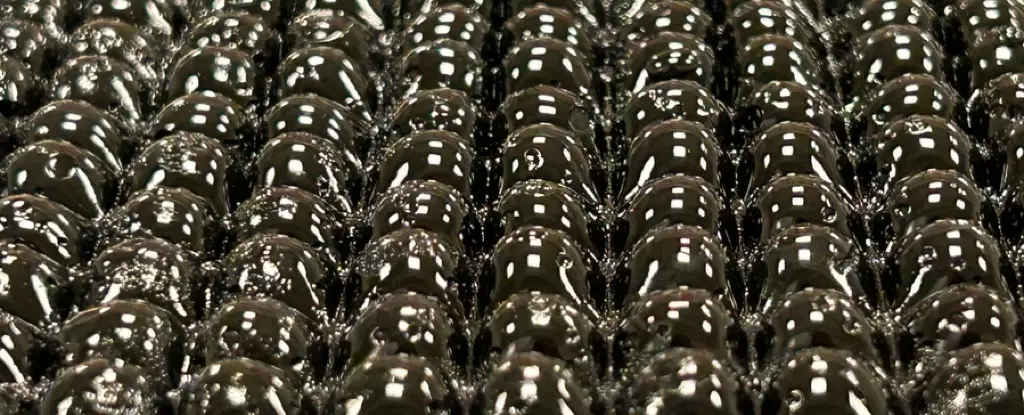Access to clean drinking water is one of humanity’s most pressing challenges, affecting billions globally. Yet, ground-breaking advances like a peculiar black “bubble wrap” developed by engineers hint at transformative solutions. This seemingly unassuming hydrogel-based atmospheric water harvester, developed by MIT researchers, has demonstrated the ability to extract tens of milliliters of potable water daily from even the driest environments, such as California’s Death Valley. Its significance lies not just in the amount of water collected but in the potential to bring safe water to resource-scarce communities without reliance on external power – a true game-changer in the quest for sustainable water access.
The Innovative Magic Behind the Material
What sets this new device apart is the ingenious use of a hydrogel infused with lithium chloride salt, glycerol, and black ink – materials that collectively tap into the invisible moisture within air. The black ink provides a dark surface that efficiently absorbs solar energy to facilitate water condensation, while the lithium chloride, a powerful hygroscopic agent, attracts and binds atmospheric moisture. The glycerol acts as a stabilizer, preventing the salt from leaching out and ensuring durability.
Shaped into a bubble wrap form, this hydrogel boasts an expansive surface area without large pores, which cleverly prevents salt loss. The entire panel is sandwiched between glass panes with a polymer coating that enhances cooling. Night-time humidity enables moisture absorption; daytime temperatures trigger evaporation and condensation cycles, creating a continuous and passive water harvesting process. This synergy of materials and design is a masterclass in biomimicry and material science, simultaneously elegant and functional.
Tackling the Hurdles of Water Scarcity with Scalable Solutions
While the technology excites scientific communities, the real test lies in scalability and practical deployment. Currently, atmospheric water harvesters have struggled with low output and contamination issues. Many previous designs produced minuscule water quantities and raised concerns due to traces of salts or metals like lithium leaching into the water. The MIT device, however, has set a new standard by delivering over 50 milliliters daily under extreme arid conditions, which is an unprecedented feat.
Death Valley, known for its brutal dryness, offers a stringent proving ground. Its surrounding mountain ranges rob the air of moisture before it even reaches the valley floor. That the device could pull water from such a harsh environment signals enormous potential for replicating the technology in other water-stressed regions. Yet, translating a lab prototype into a mass-produced, affordable, and widely accessible product involves tackling myriad challenges, from manufacturing complexities to local environmental variations.
Implications for Equity and Sustainability
This invention resonates deeply with the global imperative to democratize access to essential resources. Nearly 4.5 billion people encounter water insecurity daily, many in places where electricity or infrastructure to support conventional water solutions is unreliable or nonexistent. A water harvester that runs entirely on ambient humidity, without external power, could redefine decentralized water systems and empower vulnerable communities.
However, technological innovation alone cannot guarantee equitable distribution. It must marry with strong policy frameworks, local engagement, and economic models that prioritize affordability and user education. Environmental sustainability also demands attention: how long will the hydrogel last? Can it be recycled? Will large-scale production have ecological consequences? These questions remind us that no technology exists in isolation; social, economic, and environmental dimensions are interwoven.
Why Optimism Must Be Tempered With Realism
While the promise of this technology ignites hope, it is critical to approach it with cautious optimism. The researchers themselves emphasize it is a proof-of-concept – a first step in a long journey towards refinement. The current output is significant but modest compared to daily human hydration needs. Moreover, the solutions must be adaptable to varying climates beyond humid nights, and durable across seasons.
From a policy standpoint, nurturing such innovations means continuing public investment in research, fostering partnerships between academia and communities, and addressing water insecurity as a multifaceted issue involving climate resilience, infrastructure equity, and social justice. Celebrating breakthrough technologies is essential but should not overshadow the urgency of foundational reforms needed within water governance globally.
In sum, this black bubble wrap water harvester embodies the kind of ingenious, sustainable innovation required to confront water scarcity. It underscores the potential of clever material science to convert a planet increasingly denied by climate change into a source of life-sustaining water. Yet, its real impact hinges on scaling, access, and integration within broader systemic efforts aimed at justice and sustainability – an endeavor that demands much more than technology alone can offer.

Leave a Reply